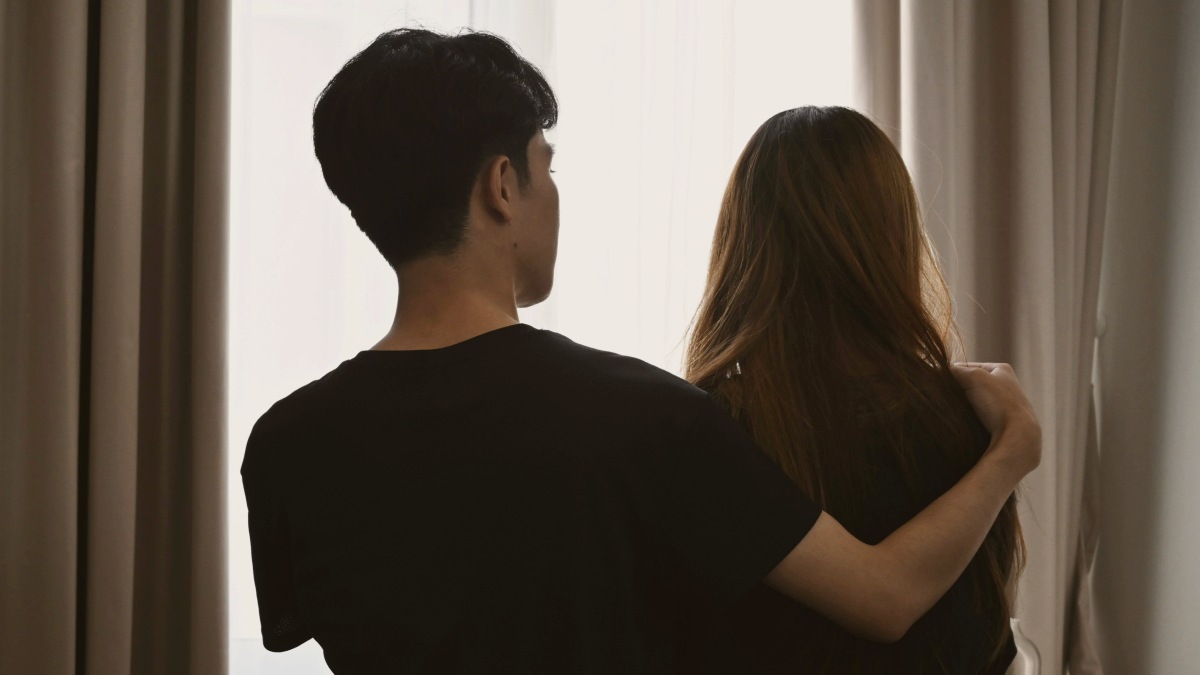
2 Pitfalls Of A 'Martyr–Beneficiary' Relationship Dynamic
Do you do all the hard work in your relationship, while your partner basks in all the benefits? You could be stuck in a 'martyr–beneficiary' relationship.

By Mark Travers, Ph.D. | February 17, 2025
In many romantic partnerships, one person may take on the role of the constant giver, prioritizing their partner's needs while neglecting their own. Meanwhile, the other partner primarily receives, often without recognizing the sacrifices being made.
At first, this dynamic—known as a "martyr-beneficiary" relationship—can appear selfless or even loving. However, over time, it can lead to emotional exhaustion, dependency and underlying resentment.
This is more than just an unhealthy dynamic—it's a specific form of codependency where the "martyr" sacrifices their own needs to maintain the relationship, often over-functioning to compensate for the other's under-functioning. Meanwhile, the "beneficiary" becomes reliant on that sacrifice, perpetuating the imbalance.
This isn't just about differing personalities; it's often rooted in childhood conditioning. The martyr may have grown up believing that their worth is tied to how much they can do for others—praised for being selfless, accommodating and always putting others first.
Meanwhile, the beneficiary may have been raised in an environment where responsibilities were handled for them, reinforcing a pattern of avoidance and dependence.
Together, they fall into a predictable cycle—one steps in to fix, rescue and nurture, while the other withdraws and resists accountability. Over time, resentment builds, conflicts escalate and both end up feeling unfulfilled.
This pattern is not just limited to romantic relationships. It plays out in friendships, sibling dynamics and even parent-child relationships. Recognizing it is the first step toward breaking free.
Here are two ways the martyr and beneficiary can become trapped in a cycle of romantic dysfunction—and what they can do to break out of it.
1. Unequal Effort May Breed Resentment
In a martyr-beneficiary relationship, one partner consistently invests more time, energy and emotional labor, while the other primarily benefits from these sacrifices. Over time, this imbalance can lead to resentment. The partner in the martyr role may begin to feel unappreciated, exhausted or even taken for granted, especially if their efforts go unnoticed or unreciprocated.
The martyr may overextend themselves emotionally, always trying to bridge the gap. The beneficiary may withdraw, feeling pressured by expectations they aren't used to meeting in relationships.
For instance, one partner may take on most of the physical workload—handling household chores, planning outings and managing shared responsibilities. Over time, these efforts become expected rather than appreciated, leaving them feeling drained and unacknowledged.
On the other hand, the beneficiary may not always be aware of the sacrifices being made. Because their needs are consistently met, they may come to expect this level of care without fully acknowledging the emotional or physical toll it takes on their partner. This dynamic can create an emotional divide, where one partner feels burdened and undervalued while the other remains possibly unaware of the growing strain.
This pattern aligns with findings from a 2012 study published in the Journal of Social and Personal Relationships, which suggests that difficult sacrifices are associated with lower relationship satisfaction. This is why partners must recognize each other's sacrifices. If either is dismissive of the other's efforts, sacrifices may feel futile, negatively affecting their bond.
2. They Become Trapped In A 'Demand-Withdraw' Cycle
When one partner constantly gives—whether through emotional support, physical effort or problem-solving—they may eventually reach a breaking point. If they start asking for change, hoping for more balance, the beneficiary might shut down—not necessarily out of indifference, but perhaps out of a deep-seated fear of failure, conflict or change.
At their core, such relationships reflect a common conflict pattern known as the "demand-withdraw" cycle. One person pushes for discussion or change, hoping to resolve the issue, while the other retreats, avoiding confrontation and maintaining the status quo.
For instance, one study published in the Journal of Family Psychology found that wives often tend to demand change while husbands withdraw more, but this can vary based on who chooses the topic for discussion, the couple's pre-existing distress levels and the length of their marriage.
Couples who engage in demand-withdraw communication tend to experience more negative emotions, use harmful conflict tactics and struggle to resolve issues. Over time, this cycle can lead to deeper emotional distress, fueling frustration, disconnection and even depression.
Already-distressed couples are more likely to fall into this pattern, further worsening their conflicts. If children are involved, this pattern can also negatively affect family dynamics and their children's well-being.
Additionally,demand-withdraw cycles may also be linked to struggles over decision-making power in a relationship. When partners struggle to problem-solve effectively, they might resort to demand-withdraw as a way to regain control in their partnership.
Breaking The Martyr-Beneficiary Cycle
Breaking this cycle requires intentional effort from both partners. For the beneficiary, this means recognizing the uneven effort in the relationship and understanding how it affects their partner. Self-awareness is key—they must notice when they're avoiding responsibility and commit to making small, consistent changes that show accountability.
Research published in the journal of Personality and Social Psychology Bulletin suggests that people who believe that one's personality can change are more likely to take responsibility for their mistakes, which helps resolve conflicts.
So, a great first step toward accountability is shifting your perspective—viewing relationship challenges not as battles to win, but as opportunities for personal growth.
The martyr, on the other hand, needs to set healthy boundaries by recognizing that love shouldn't come at the cost of constant self-sacrifice. They must learn to communicate their needs and expectations clearly, and without guilt.
It's also important for the martyr to step back at times and allow the beneficiary to take responsibility, without expecting perfection. For instance, if the martyr is used to doing chores a certain way and their partner doesn't do them exactly as they would, they should resist the urge to step in and "fix" it, giving them the space to learn and improve on their own.
Better communication is also key to a healthier dynamic. This means shifting from criticism to constructive feedback, truly listening to each other without getting defensive and creating a space where both partners feel safe to express their thoughts and emotions without fear of judgment.
Healthy love isn't about one person carrying the weight while the other coasts; it's about mutual effort, appreciation and a shared commitment to growth. When both partners meet each other with understanding and accountability, they can build a relationship that nurtures them both—one where love is given, received and valued equally.
Do you feel emotionally drained and overextended in your relationship? Take this science-backed test to find out: Couple Burnout Measure
A similar version of this article can also be found on Forbes.com, here, and on PsychologyToday.com, here.
